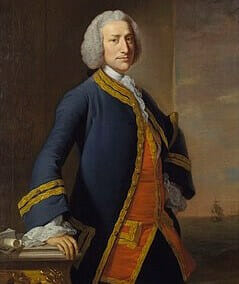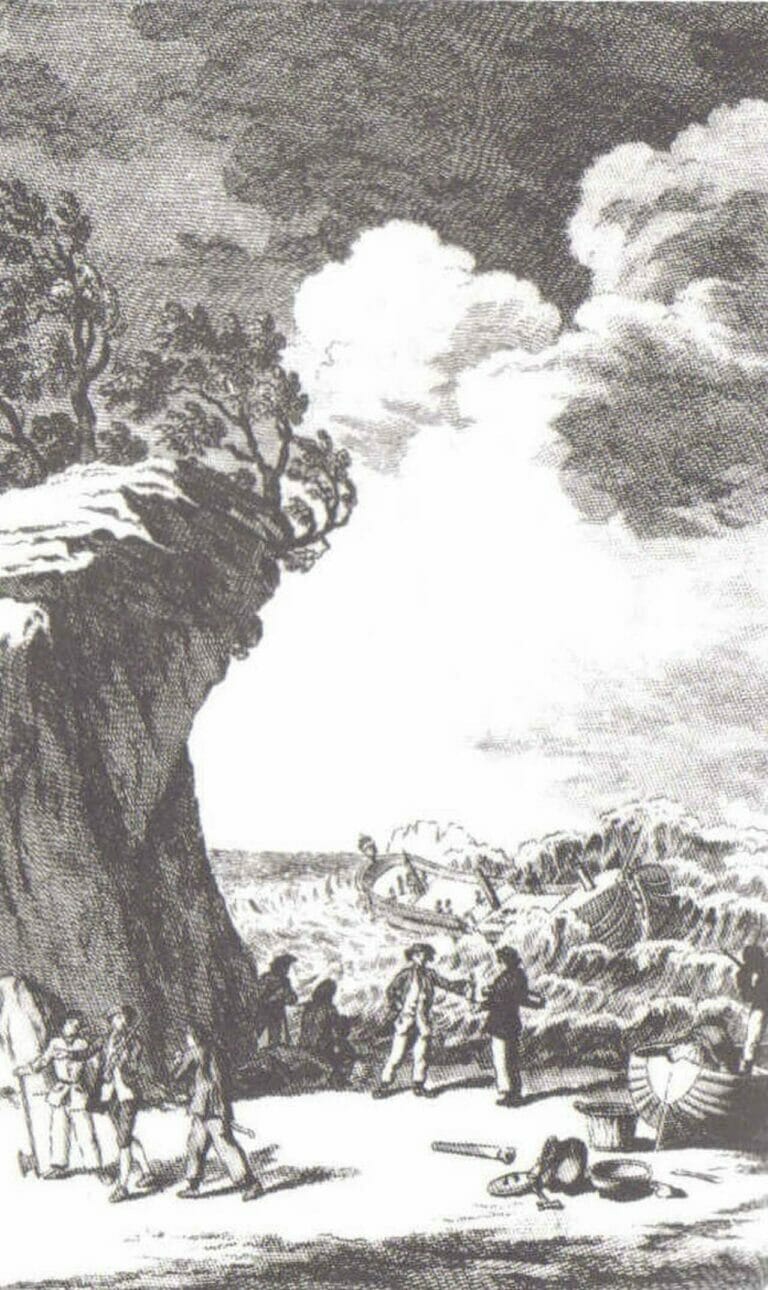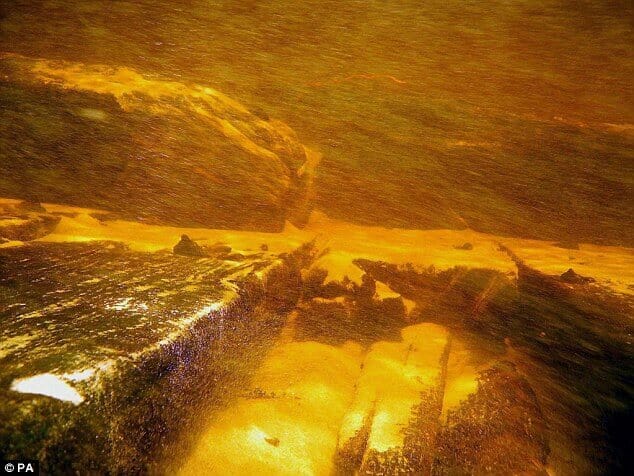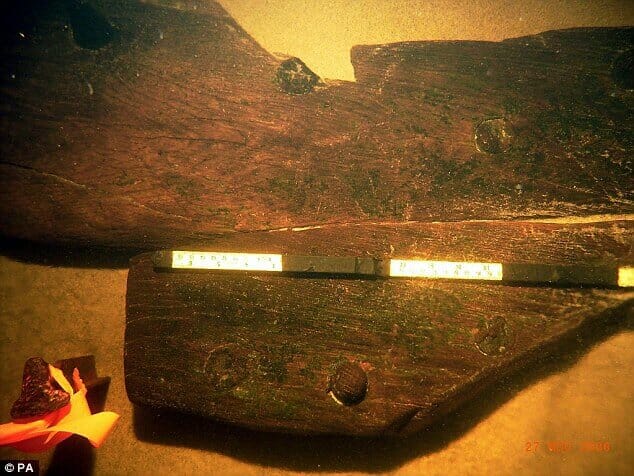Mutiny or Survival – The Shipwreck of HMS Wager (1739)
- Updated on:
- Written by Gary Renshaw
Waters have for many millennia separated but also connected civilizations. They have been the carrier of many human adventures. Some of the traces of the travellers, warriors or merchants have found their last resting place on the bottom of the sea, rivers and lakes.
It can be estimated that over 3 million shipwrecks are spread across ocean floors around the planet. While this is of course only an estimate and while the preservation of their remains depends much on the environment, some of these wrecks are thousands of years old. They can provide precious historical information. A shipwreck by nature is testimony to trade and cultural dialogue between peoples. It also functions, however, as a time capsule, providing a complete snapshot of the life on board at the time of sinking. The location of one such time capsule is Drakes Passage.
Drakes Passage
This passage is located in the rocky gap of sea between Antarctica and South America. It was a very dangerous route for 18th century seafarers wishing to travel around South America to the West Coast. The passage goes far south in order for ships to be able to navigate around Cape Horn and sensible sailors avoided this perilous route at all costs. The British Royal Navy ship HMS Wager chose to take this route and was at full sail in the dead centre of the passage 12 April 1741.

Background to HMS Wager
HMS Wager was a square-rigged sixth-rate Royal Navy ship of 28 guns. She was built as an East Indiaman in about 1734 and made two voyages to India for the East India Company before the Royal Navy purchased her in 1739. She was an armed trading vessel, built to accommodate large cargoes of goods from the Far East. She carried 30 guns and had a crew of 98.
Her first voyage was under Captain Charles Raymond when she sailed from the Downs on 13 February 1735, arriving in Madras on 18 July and returning to England via St Helena in July 1736. She made her second and final run for the Company to India in 1738, sailing via the Cape of Good Hope to Madras and Bengal, and returning to the Downs on 27 August 1739.
Purchasing the HMS Wager
The Admiralty purchased Wager from Mr J. Raymond on 21 November 1739, and rated her as a 28-gun sixth-rate. This rate is used to describe the smallest class of frigate. It is a single deck ship, square-rigged, with around 28 nine-pounder guns, and a crew of around 200 men. A small ship they were handy for scouting work and good for chasing down privateers in smaller brigs and sloops. They were also useful in blockades as they could sail in shallow waters keeping a close eye on enemy ports.
It was purchased to fill the squadron under Commodore George Anson that would attack Spanish interests on the Pacific west coast of South America. Her role was to carry additional stores of small arms, ball and powder to arm shore raiding parties. It was apt that she carried the name of the principal sponsor of the voyage, Admiral Sir Charles Wager.
She was fitted for naval service at Deptford Dockyard between 23 November 1739 and 23 May 1740 at a cost of £7,096.2.4d, and was registered as a sixth-rate on 22 April 1740, being established with 120 men and 28 guns.

Commodore Ansons Expedition
Anson’s expedition to the Pacific in August 1740 comprised six warships and two transports, all manned by 1854 men. The Navy commissioned Wager under Captain Dandy Kidd, who died before the ship reached Cape Horn; Lieutenant David Cheap was promoted to captain (acting). The squadron rounded Cape Horn in terrible weather, which scattered the ships of the squadron. Wager became separated and then needed to make her rendezvous. Unfortunately, she turned north before she had sailed sufficiently far to the west, and in foul weather closed the coast of modern-day Chile.

Wager in Uncharted Territory
On 13 May 1741 at 9:00am, the carpenter went forward to inspect the chain plates. Whilst there he thought he caught a fleeting glimpse of land to the west. Lieutenant Baynes was also there but he saw nothing, and the sighting was not reported. Consequently, no one realised that Wager had entered a large, uncharted bay.

At 2:00pm land was positively sighted to the west and northwest and all hands were mustered to make sail and turn the ship to the southwest. During the operations that followed, Captain Cheap fell down the quarterdeck ladder, dislocated his shoulder, and was confined below. The ship’s disabled and worn-out condition severely hampered efforts to get clear of the bay.
At 4:30am the next day the ship struck rocks repeatedly, broke her tiller, and although still afloat, was partially flooded. Invalids below who were too sick to get out of their hammocks drowned. The ship was steered with sail alone towards land, but later in the morning the ship struck again, and this time became hard aground.

Cheap whilst a prisoner after the shipwreck notes He argues he tried to keep order by shooting a drunken midshipman. Stating about the shooting “ “I even proceeded to extremities”.
In a previously unpublished letter Captain Cheap wrote “My ship’s company at that unhappy juncture [when shipwrecked] were almost all sick, having not more than six or seven seamen, and three or four marines, that were able to keep the deck.” The crew he comments on were ‘ ‘ so fatigued by the voyage that they could scarcely “do their duty”. In addition he claims having fallen and injured himself, he was drugged by the ship’s surgeon, and that orders he gave were disobeyed.
Wager had struck the coast of what would subsequently be known as Wager Island in position 47°40′43″S 75°02′57″W. Some of the crew broke into the spirit room and got drunk, armed themselves and began looting, dressing up in officers’ clothes and fighting. The other 140 men and officers took to the boats and made it safely to shore. On the following day, Friday 15 May, the ship bilged amidships and many of the drunken crew still on board drowned.

Mutiny or Survival
Many of the crew reached an island safely. The ship was the store vessel for the Squadron so they were able to salvage enough food to survive. However, once ashore a dispute arose regarding the Captain’s powers of command over the soldiers who had been aboard and the sailors who, once their ship was wrecked, were no longer paid by the Navy. A mutiny occured, after the Captain had shot dead a Midshipman. The Captain claimed that he shot the midshipman to try and maintain order, which it certainly did not. The survivors split into two groups.
Cheap wrote too of his shock at the mutineers’ barbarity, and at their “carrying with them all our arms, ammunition, the few clothes that we had saved … everything that could be of the least use to us”. His letter is included in Layman’s book, The Wager Disaster: Mayhem, Mutiny and Murder in the South Seas.
The Captain and a party of officers and men, numbering around 20, eventually sailed northward in open boats hoping to reach civilization. Some 80 of the crew and soldiers went south in an extended long boat. This crew was under the control of gunner Mr Bulkely they sailed through the Straits of Magellan to Brazil and thence to Britain.
The mutineers, too, suffered dreadfully – from starvation, accidents, murder, abduction. Most died. The 30 survivors endured a 107-day, 2,500 nautical mile voyage. Getting back to England in 1743, some months before Cheap, they found their name blackened and facing an Admiralty inquiry.
The Captain’s party, which included Midshipman Byron, later Admiral the Lord Byron, grandfather of the famous poet, suffered unimaginable privations before being helped by a friendly Chunos Indian chief named Martin, who took the remaining last four survivors in canoes to the island of Chiloe.
There, the four officers, including Byron, were cared for extremely well. A local beauty even begged the handsome Byron to marry her, and her uncle, a rich priest offered Byron a huge treasure if he would. Byron, a staunch naval officer, believed it his duty to return to England and declined. After many months in Chiloe the survivors were sent to Valparaiso and then Santiago where again, they were treated with much kindness. Even the Spanish Admiral, sent to defeat Anson (Britain was then at war with Spain) took a liking to them.
A court marshall did absolve the Captain of blame for the loss of HMS Wager and no action was taken against those members of the crew who had disobeyed his orders. However, to avoid such a situation reoccurring, Admiral Anson introduced an Act of Parliament in 1748 extending Naval discipline to crews wrecked, lost or captured. This led to the formation of the Marines, now the Royal Marines in 1755.
Events after the mutiny
In the years after the wreck the Spanish sent expeditions to recover the guns and to establish a presence in the area. Spanish charts of the mid-eighteenth century show the approximate location of the wreck, indicating that it was well-known to the local elite at the time.
In late 2006, a Scientific Exploration Society expedition searched for the wreck of the Wager and found, in shallow water, a piece of a wooden hull with some of the frames and external planking. Carbon-14 dating indicated a date contemporary with the Wager. In 2007, the Transpatagonia Expedition visited the wreck site and saw more remains.

The novel The Unknown Shore (pub. 1959) by Patrick O’Brian is based on the accounts of the survivors. One of the crew on Wager was Midshipman John Byron, later Vice-Admiral in the Royal Navy and grandfather of the famous poet George Byron. O’Brian’s novel closely follows John Byron’s account.

Key Takeaways
- HMS Wager, a Royal Navy ship, wrecked in Drake's Passage in 1741 during an expedition led by Commodore George Anson to attack Spanish interests in South America.
- Originally built for the East India Company, it was purchased by the Royal Navy in 1739, becoming a 28-gun sixth-rate frigate for Anson's expedition.
- Separated from the squadron in bad weather, Wager wrecked on uncharted territory due to navigational errors and a compromised condition.
- A mutiny ensued post-wreck, with disputes over command and survival leading to division among survivors. Captain David Cheap shot a mutinous midshipman, exacerbating tensions.
- Survivors, including Midshipman John Byron, faced extreme hardships but were aided by locals in Chile. The incident influenced naval discipline laws and the formation of the Royal Marines.
- Later searches for the wreck found remains, validating historical accounts. The story inspired literature, including Patrick O’Brian’s novel "The Unknown Shore."
References
Further Reading
- Pack, S. W. C. (1964). The Wager Mutiny. A. Redman.
- Somerville, Henry Boyle Townshend (1934). Commodore Anson’s Voyage into the South Seas and Around the World. W. Heinemann.
- Winfield, Rif (2007). British Warships in the Age of Sail 1714–1792: Design, Construction, Careers and Fates. Seaforth Publishing.
- Layman, Rear Admiral C. H. (2015). The Wager Disaster: Mayhem, Mutiny and Murder in the South Seas
- Podcast – S3 E12. SEA PART IV – The HMS Wager
- Youtube – The Quest for HMS Wager V1A

Learn The Art Of Building A Model Ship
Get started in wooden model ship building today









